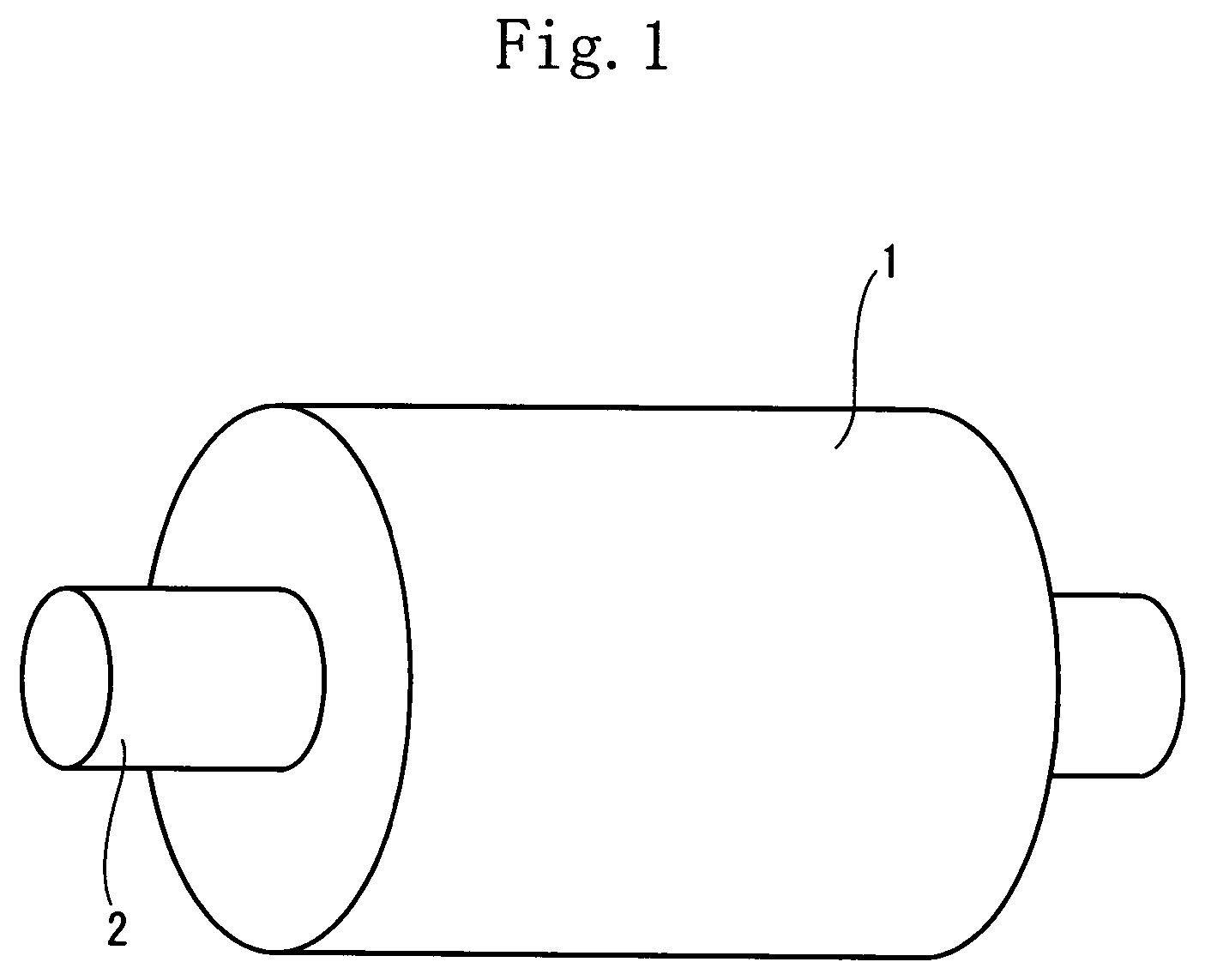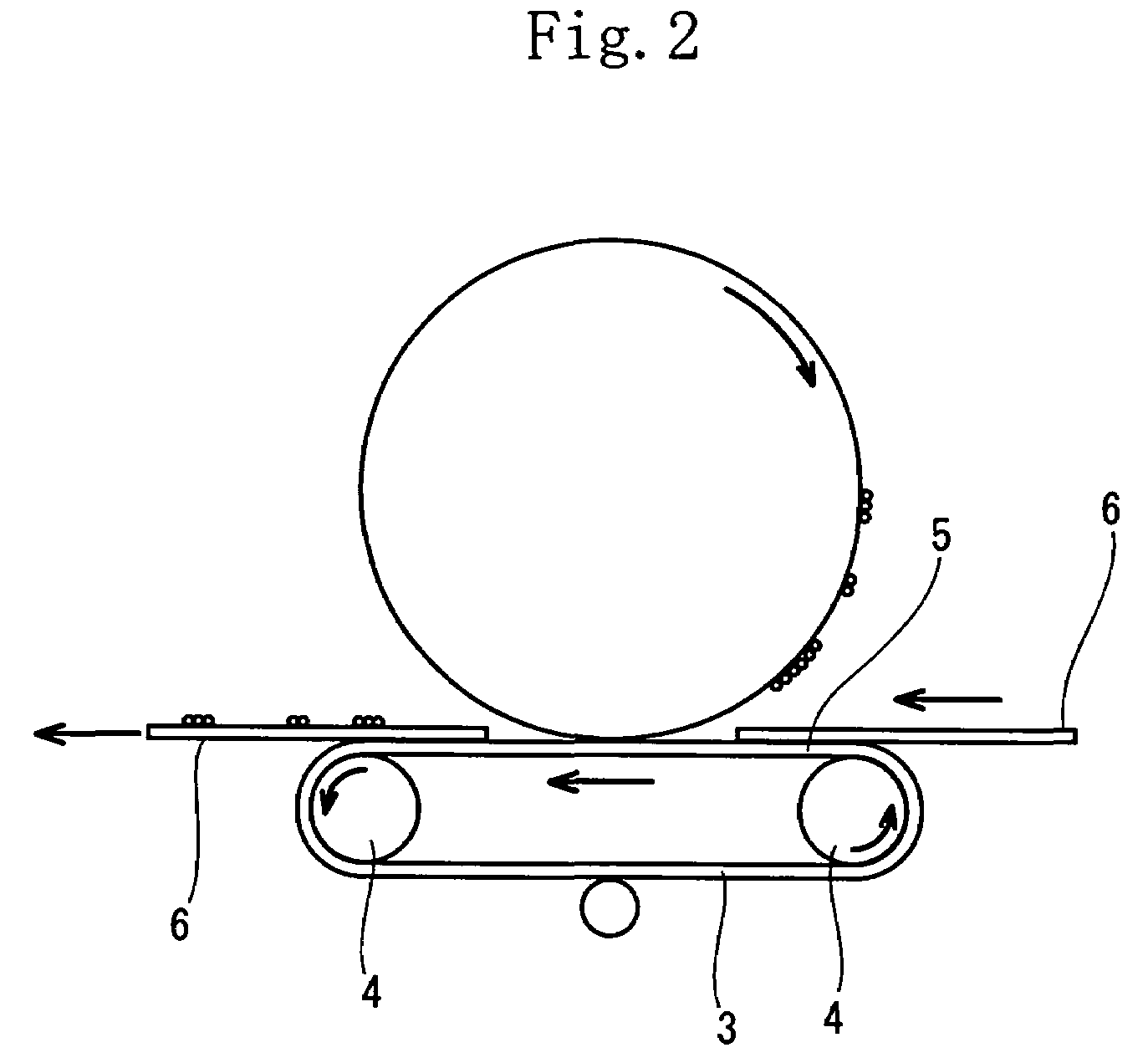Conductive elastomer composition, conductive member using conductive elastomer composition, image-forming apparatus having conductive member
a technology of conductive polymer composition and composition, which is applied in the direction of non-metal conductors, cell components, conductors, etc., can solve the problems of difficult control of electric resistance, difficulty in conventional art to reduce electric resistance value, and inability to use conductive polymer composition for products, etc., to achieve low conductivity, low volume change, and low electric resistance
- Summary
- Abstract
- Description
- Claims
- Application Information
AI Technical Summary
Benefits of technology
Problems solved by technology
Method used
Image
Examples
examples 1 through 11
[0134]As shown in table 1, each of the conductive elastomer composition of the example 1 through 10 contained the EP-EO-AGE terpolymer having the same copolymerization ratio (EP:EO:AGE=23:73:4) which falls in the range specified in the present invention. The conductive elastomer composition of the example 11 contained the EP-EO bipolymer (EP:EO=39:61).
[0135]In the examples 1 through 4 and 9 through 11, the lithium-bis(trifluoromethanesulfonyl)imide was used as the anion-containing salt having the fluoro group (F—) and the sulfonyl group (—SO2—). In the examples 5 through 7, lithium trifluoromethanesulfonate was used. In the example 8, lithium-tris(fluoroalkylsulfonyl)methane was used.
[0136]The components of each example were mixed with one another at the mixing ratio shown in table 1 to obtain the conductive elastomer composition of each example.
examples 12 and 13
[0198]The conductive elastomer composition of the example 12 contained one part by weight of the anion-containing salt having the fluoro group (F—) and the sulfonyl group (—SO2—) (lithium-bis(trifluoromethanesulfonyl)imide) added to 100 parts by weight of a mixture of the EP-EO bipolymer having the copolymerization ratio (EP:EO=39:61) falling in the range specified in the present invention and polar NBR, and the additives shown in table 4 having the mixing ratio shown in table 4.
[0199]The conductive elastomer composition of the example 13 contained one part by weight of the anion-containing salt having the fluoro group (F—) and the sulfonyl group (—SO2—) (the lithium-bis(trifluoromethanesulfonyl)imide) added to 100 parts by weight of a mixture of the EP-EO bipolymer having the copolymerization ratio (EP:EO=39:61) falling in the range specified in the present invention and polar chloroprene rubber (CR), and the additives shown in table 4 having the mixing ratio shown in table 4.
PUM
| Property | Measurement | Unit |
|---|---|---|
| voltage | aaaaa | aaaaa |
| temperature | aaaaa | aaaaa |
| volume change | aaaaa | aaaaa |
Abstract
Description
Claims
Application Information
 Login to View More
Login to View More - R&D
- Intellectual Property
- Life Sciences
- Materials
- Tech Scout
- Unparalleled Data Quality
- Higher Quality Content
- 60% Fewer Hallucinations
Browse by: Latest US Patents, China's latest patents, Technical Efficacy Thesaurus, Application Domain, Technology Topic, Popular Technical Reports.
© 2025 PatSnap. All rights reserved.Legal|Privacy policy|Modern Slavery Act Transparency Statement|Sitemap|About US| Contact US: help@patsnap.com



